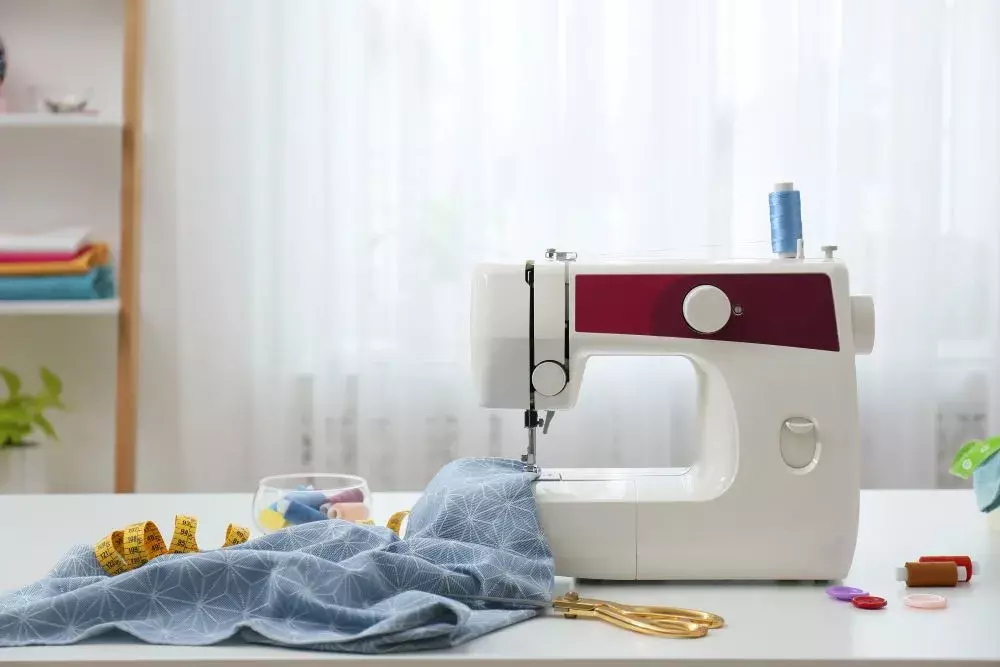Choosing the Perfect Sewing Table: Factors to Consider
2023-10-24
If you’re a DIY sewing enthusiast who enjoys making all kinds of projects with your sewing machine, you’re probably passionate about your craft. Maybe you often find yourself stitching diligently for a while, only to look up and realize that hours have passed. If you relate to this, you’re not alone!
Your sewing table is one of the most important parts of your setup. To keep sewing for many years to come, using the right sewing table for your needs is crucial.
How to Choose the Right Sewing Table for You
A sewing table without enough space can cause issues for your projects and your ability to level up. If your sewing table or chair isn’t set up correctly, you could develop many physical issues, including backaches, neck aches, and carpal tunnel syndrome.
Have you ever considered whether your sewing table is working for you or against you? There’s no better time than now to determine whether your sewing table meets your needs. Here are a few of the most important factors to keep in mind when it comes to your sewing table.
Your Sewing Table Should Be Even With Your Elbows
When a sewing table is too high, you’ll have to hunch your shoulders to properly use your sewing machine. If the table is too low, you’ll lean over while stitching, causing strain on your neck and back. Additionally, having a table that’s too low can cause your legs to feel crunched, making it difficult to use your presser foot.
Both of these situations can cause serious physical pain over time. A good rule of thumb is to choose a sewing table that is even with your elbows when seated or standing if you prefer to use a standing desk. This way, you can keep a relatively neutral position as you stitch to avoid any aches or pains.
Consider How Much Width You’ll Need
Just because your sewing machine fits on your sewing table doesn’t mean it’s big enough to complete your projects. Your sewing table should comfortably accommodate your sewing machine and any lighting, long stretches of fabric, extra needles and thread, and other accessories you’re using for your project.
If you’re unsure how wide your sewing table should be, consider the type of projects you usually do. If you create long garments or items that use a lot of fabric, such as gowns or suits, you’ll need more space than you think. However, smaller items like bags, shirts, jackets, and children’s clothes don’t need quite as much space.
Choose an Appropriate Sewing Table for Your Height
Since sewists come in various shapes and sizes, it can be difficult for sewing tables to accommodate every person’s height in their design. Because of this, a custom table can be ideal. There are also many pre-made tables you can choose from that offer a range of different heights.
However, if you have trouble finding a sewing table that you can sit or stand properly at, keep in mind that any table can be a sewing table if it works for you. The most important features are your chosen table’s height and width.
Don’t Use Just Any Chair
With so much focus on your sewing table, it’s easy to forget about your sewing chair. But when it comes to avoiding pain from improper sitting, your chair plays a key role.
Whatever chair you use, ensure your feet are flat on the floor when your elbows are even with the sewing table. Using a chair with adjustable height is recommended.
Small Adjustments Can Make Big Differences
If your sewing table is almost perfect but not quite, remember that you can make minimal adjustments to get it where it needs to be. For example, if your table just needs to be a bit higher, add some boosters underneath the legs to make it taller, or cut down the legs an inch or two if needed.
Create the Ideal Sewing Setup With GoldStar Tool
When you have all the right tools, you can bring your DIY crafting to the next level. At GoldStar Tool, we have everything you need for the perfect sewing setup, from sewing machines and tables to fabrics and tools. Shop our wide selection online or contact us to learn more today.





